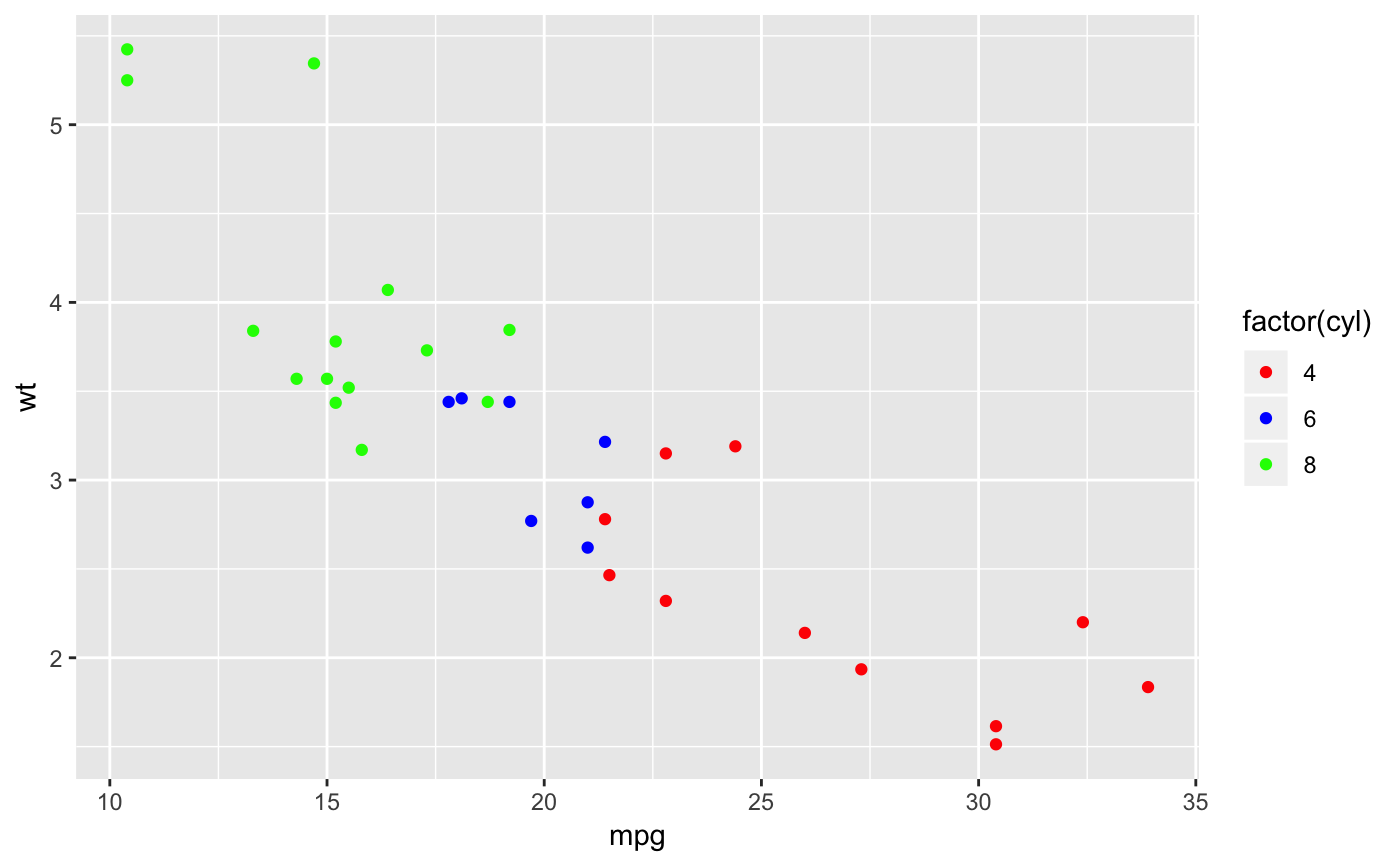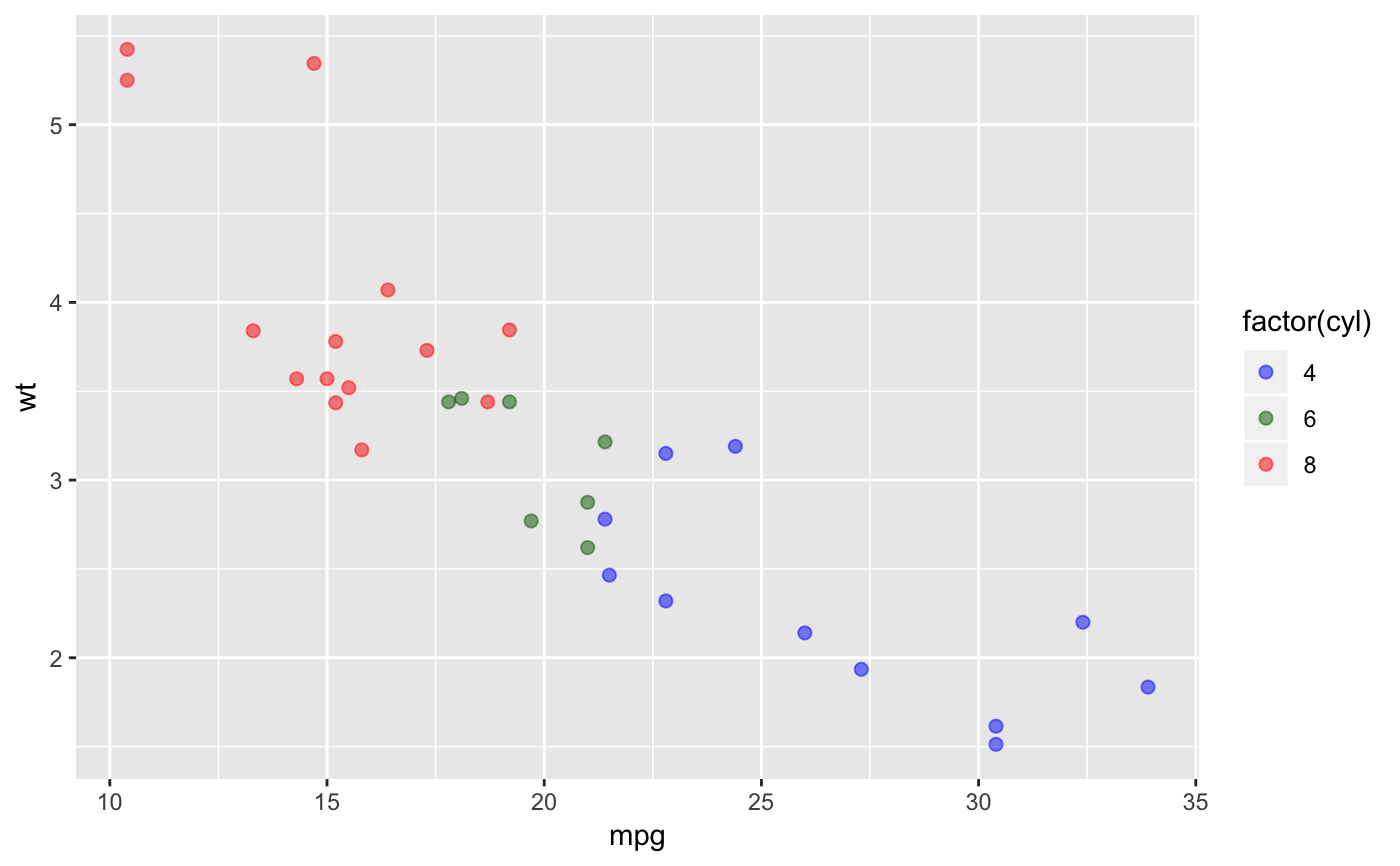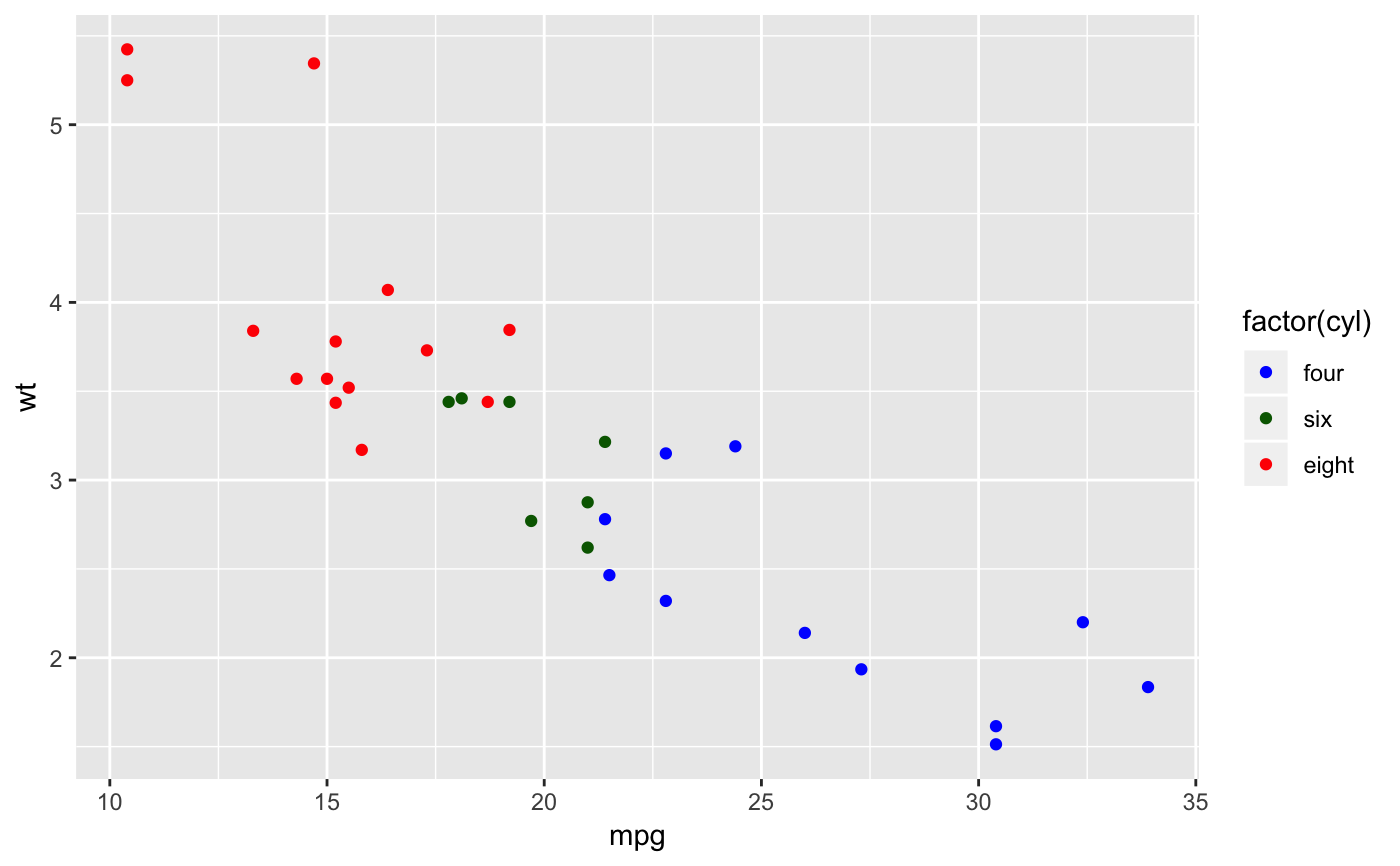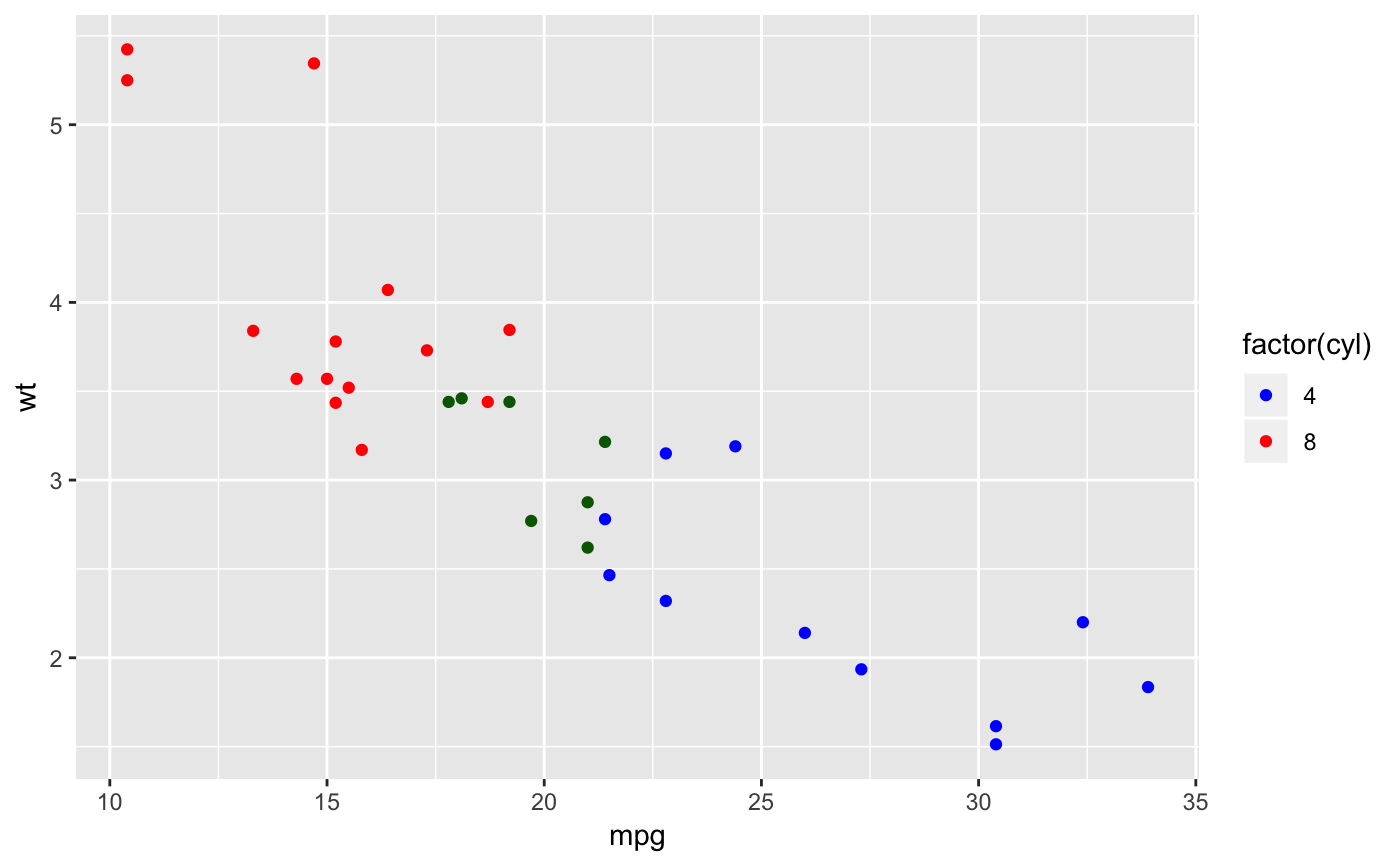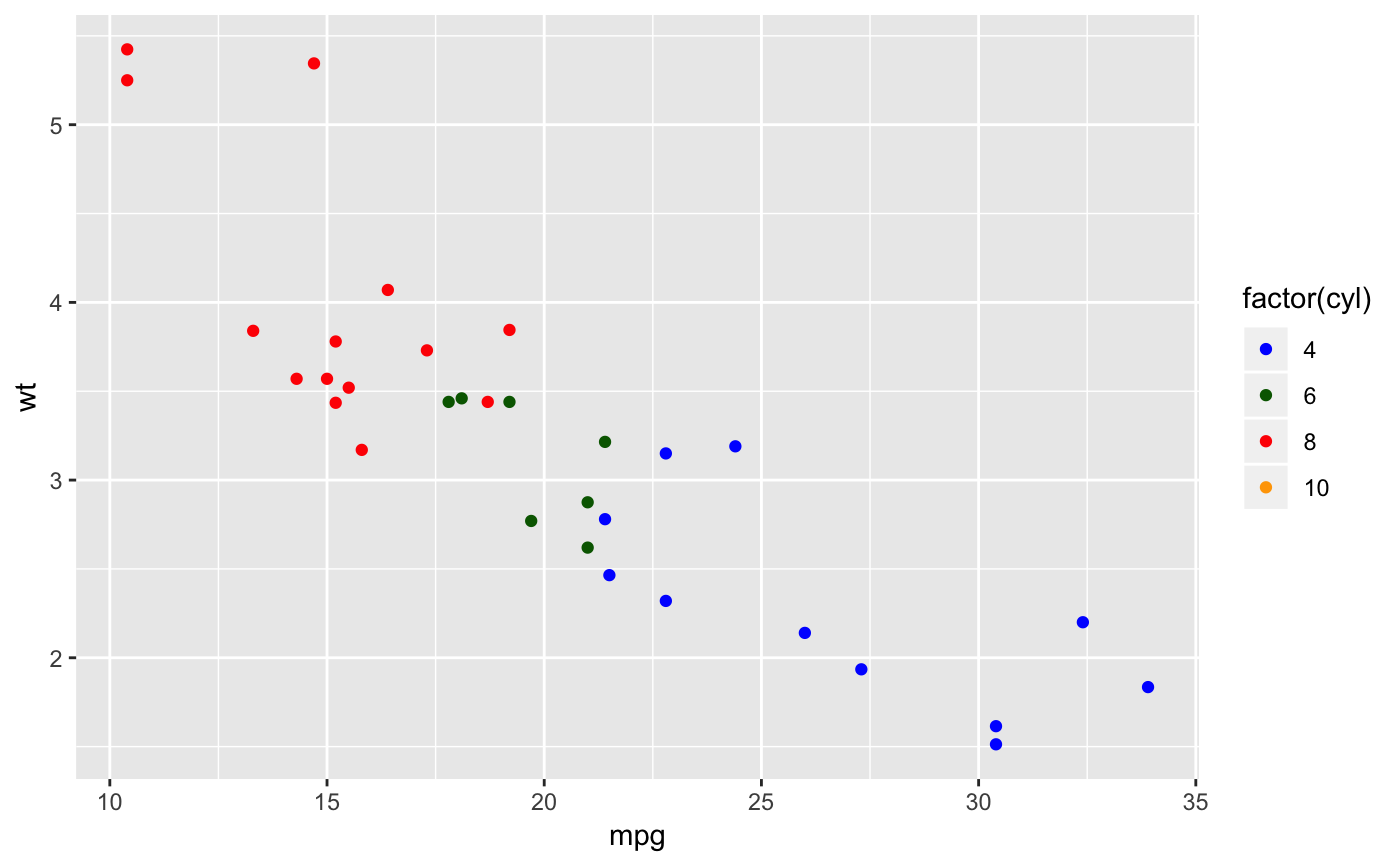These functions allow you to specify your own set of mappings from levels in the data to aesthetic values.
scale_colour_manual(..., values, aesthetics = "colour") scale_fill_manual(..., values, aesthetics = "fill") scale_size_manual(..., values) scale_shape_manual(..., values) scale_linetype_manual(..., values) scale_alpha_manual(..., values) scale_discrete_manual(aesthetics, ..., values)
Arguments
| ... | Arguments passed on to
|
|---|---|
| values | a set of aesthetic values to map data values to. If this
is a named vector, then the values will be matched based on the names.
If unnamed, values will be matched in order (usually alphabetical) with
the limits of the scale. Any data values that don't match will be
given |
| aesthetics | Character string or vector of character strings listing the
name(s) of the aesthetic(s) that this scale works with. This can be useful, for
example, to apply colour settings to the |
Details
The functions scale_colour_manual(), scale_fill_manual(), scale_size_manual(),
etc. work on the aesthetics specified in the scale name: colour, fill, size,
etc. However, the functions scale_colour_manual() and scale_fill_manual() also
have an optional aesthetics argument that can be used to define both colour and
fill aesthetic mappings via a single function call (see examples). The function
scale_discrete_manual() is a generic scale that can work with any aesthetic or set
of aesthetics provided via the aesthetics argument.
Examples
p <- ggplot(mtcars, aes(mpg, wt)) + geom_point(aes(colour = factor(cyl))) p + scale_colour_manual(values = c("red", "blue", "green"))# It's recommended to use a named vector cols <- c("8" = "red", "4" = "blue", "6" = "darkgreen", "10" = "orange") p + scale_colour_manual(values = cols)# You can set color and fill aesthetics at the same time ggplot( mtcars, aes(mpg, wt, colour = factor(cyl), fill = factor(cyl)) ) + geom_point(shape = 21, alpha = 0.5, size = 2) + scale_colour_manual( values = cols, aesthetics = c("colour", "fill") )# As with other scales you can use breaks to control the appearance # of the legend. p + scale_colour_manual(values = cols)p + scale_colour_manual( values = cols, breaks = c("4", "6", "8"), labels = c("four", "six", "eight") )# And limits to control the possible values of the scale p + scale_colour_manual(values = cols, limits = c("4", "8"))p + scale_colour_manual(values = cols, limits = c("4", "6", "8", "10"))
